Open10:00~17:00
MUSEUM STORY
Records of time on Earth, here are the stories of the Geological Musuem.
Click "More" to see more contents.
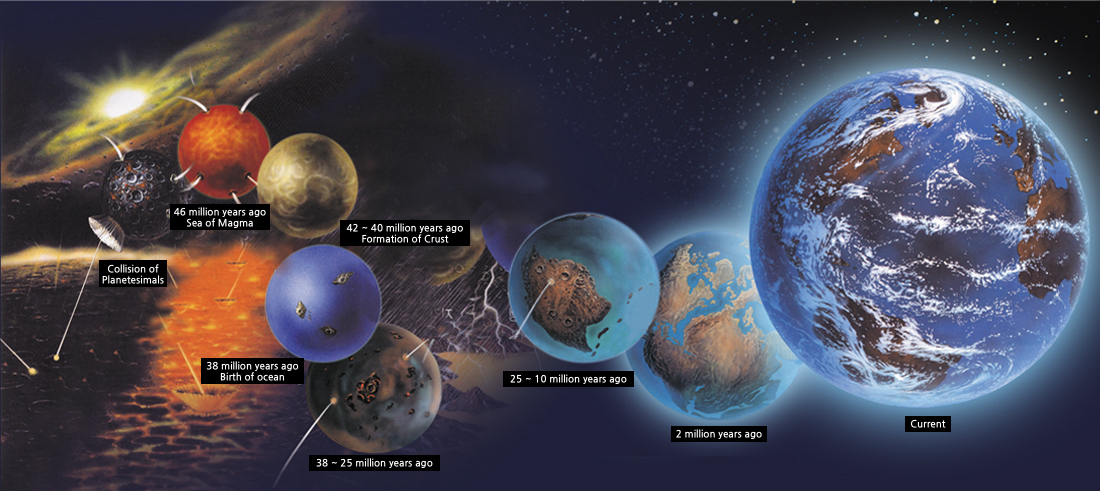
Meet the Earth
Birth of Earth : Pieces of the universe were unitedPrimitive planets were formed from materials remaining from the formation of the primitive sun.
The surface of the planet formed a sea of hot boiling magma as the massive collision energy from collision and fusion of debris and matters turned into heat energy.
However, planets of the solar system gradually started to cool down and the surface gradually became hardened.
The primitive Earth went through these processes and gradually has taken on the shape of today's Earth.
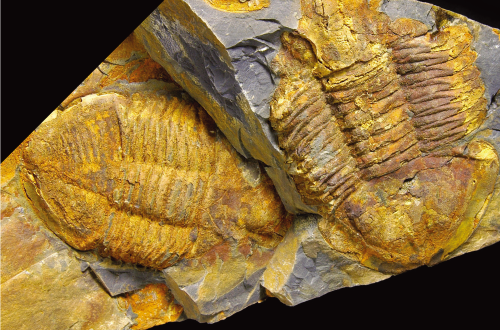
Evolution of Life
Rise of Life 1 : Biography of bugs that swarmed the oceanThe trilobites, which look like big bugs, are arthropods of the sea that appeared about 520 million years ago. There are more than 15,000 known species that have flourished in the oceans around the world, including Korea. The size is also various, with small ones in several millimeters and large ones over 70 cm.
The trilobites, which were surprisingly well adapted to the environment, passed several extinction crises, and survived for some 270 million years.
However, with the end Paleozoic Permian extinction when 95% of the sea organisms became extinct, the trilobites also disappeared.
In the Mesozoic sea, where all the trilobites have disappeared, the ammonite gradually became the main character with various reptiles, but it completely disappeared from the sea at about 65 million years ago.
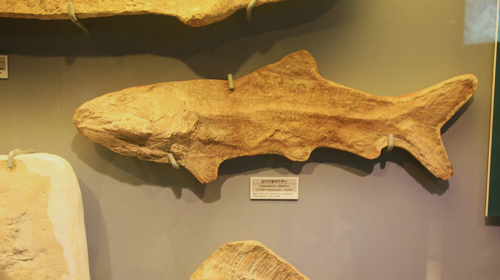
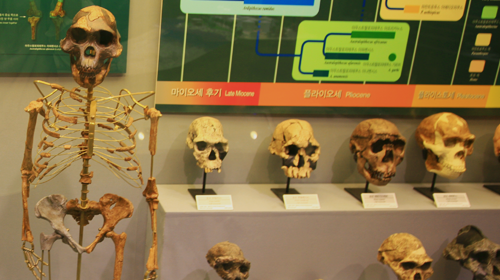
Approximately 520 million years ago, from the early Paleozoic waters, fish like small worms swam with their weak fins, swinging their bodies from side to side.
This fish, which had no jaw for chewing food, could only suck the food with its mouth that looks like a small hole, but it had an unusually long, stiff rod in its body.
The back bone or vertebrae that all vertebrates, including humans, have originated from this rod in the body of this small fish.
Fish with spines is not satisfied with just swimming, and has continuously evolved for more than 500 million years.
The mouth, which was only a hole, has evolved into strong jaws and teeth, and it was able to eat more diverse foods.
Some of the fish evolved into amphibians, allowing them to go out of the water with their sturdy fins with bones.
The reptile that had moist and soft skin covered with scales and laid eggs on the ground then evolved into a dinosaur. Avians that evolved feathers from scales, and mammals with furs had led to the emergence of mankind walking with two legs in the future.
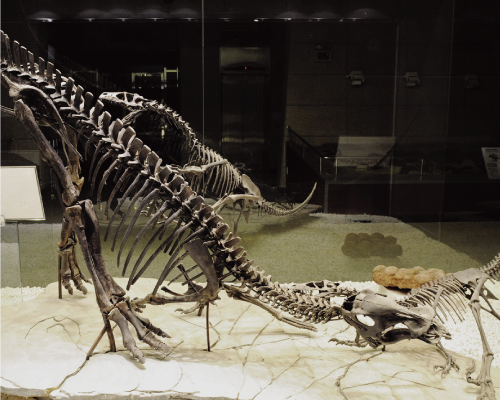
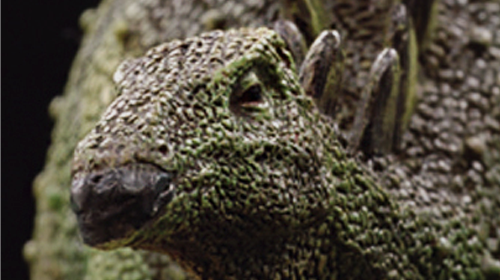
Age of Dinosaurs
Evolution of Dinosaurs : A visit to the giant reptile familyDinosaurs are reptiles that have their skins covered with scales and laid eggs for breeding, but are distinguished from today's crocodiles and lizards.
The legs stretching straight down from the sturdy hip bones, like tightly knit boxes, resemble mammals rather than reptiles, allowing them to effectively support their weight and grow up to amzing sizes.
Some dinosaurs were able to walk on the ground with a body weight of 100 tons.
The period that dinosaurs ruled the Earth was from about 228 million years ago in the Late Triassic to the end of the Cretaceous, spanning more than 160 million years, and that is more than 20 times the history of humans (maximum of 7 million years).
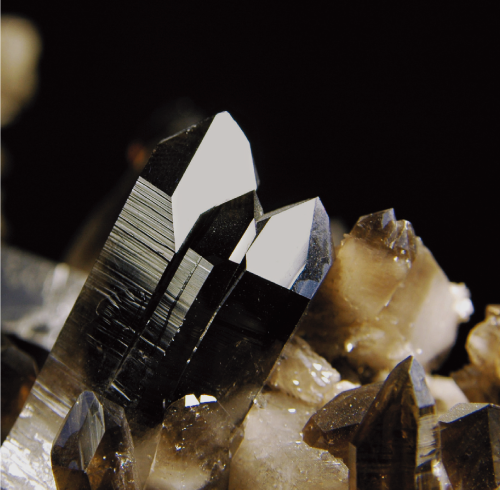
Minerals
Definition of minerals : Rocks are beautiful?
Minerals show various crystal forms due to the combination of constituent elements, and display various colors through its constituents or impurities. The beautiful crimson color of rhodochrosite is attributed to manganese, and the beautiful cyan color of malachite is represented by copper. Rock salt is a combination of sodium and chlorine in cubic crystals.
Minerals show various crystal forms due to the combination of constituent elements, and display various colors through its constituents or impurities.
The beautiful crimson color of rhodochrosite is attributed to manganese, and the beautiful cyan color of malachite is represented by copper.
Rock salt is a combination of sodium and chlorine in cubic crystals.
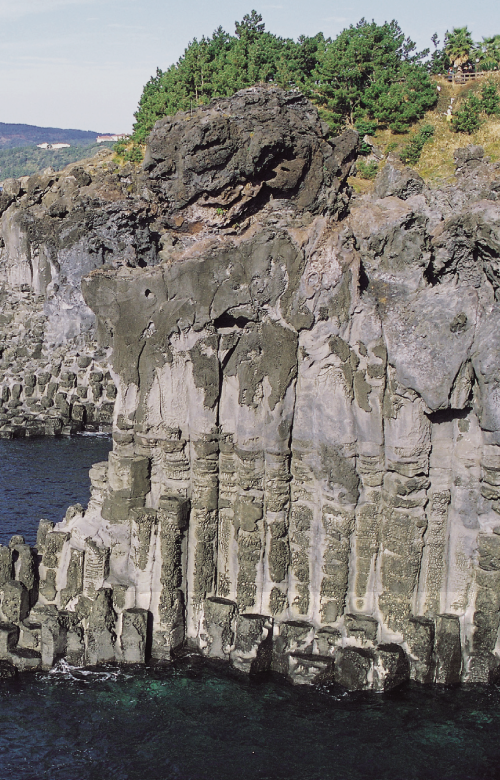
Types of rocks
Igneous rock : memories of cooled magmaThe igneous rocks are formed by solidification of the earth's magma as it rises to the surface are named according to the depth at the time of formation and the content of silica (SiO2) acid. The rocks formed by the magma spewing on the surface are called volcanic rocks and include rhyolite, andesite, basalt, and komatiite.
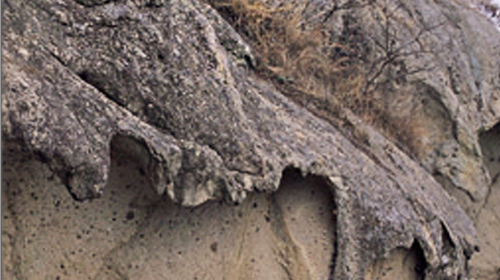 Sedimentary rock : records of the past
Sedimentary rock : records of the past
Sedimentary rock are those broken down into small grains due to weathering, and eroded, transported, deposited, and solidified to form a solidified state. It is a textbook of natural history that not only explains the geological environment at the time of its formation, but also the past life forms through the fossils contained therein.
Metamorphic rocks are rocks that have undergone high heat and pressure in the earth and turned into rocks of different properties. These metamorphic rocks are classified according to metamorphism, metamorphic texture, and types of protolith.
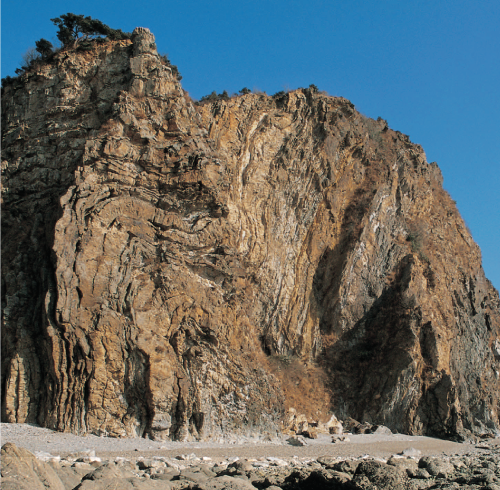
Geological structures
Sculptures created by EarthA lot of features are expressed on rocks or rock bodies due to crustal movements and environmental factors during rock formation. Features formed during crustal movements are called geological structures, and various features imprinted on rocks due to environments during rock formation are called rock structures. Geologic structures include folds, unconformity, and lineations, and rock structures include igneous structures, sedimentary structures, and metamorphic structures. Geological structures and rock structures are natural sculptures and gifts created by nature.